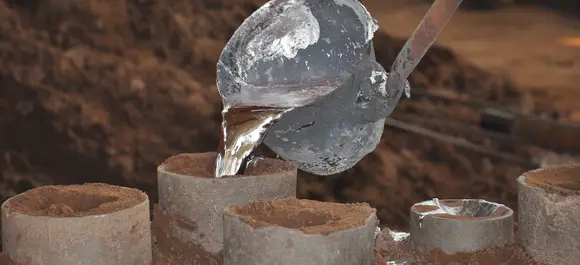Mobile:+86-311-808-126-83
Email:info@ydcastings.com
aluminum castings
The Versatility and Applications of Aluminum Castings
Aluminum castings have become an essential component in various industries due to their unique properties and numerous advantages. With its lightweight, excellent corrosion resistance, and strong yet malleable nature, aluminum serves as an ideal material for producing a wide range of components through casting processes. This article explores the merits of aluminum castings, their manufacturing methods, diverse applications, and future trends in the industry.
Properties of Aluminum Castings
One of the main benefits of aluminum castings is the material's lightweight nature. Aluminum is about one-third the weight of steel, making it increasingly popular in applications where reducing weight is crucial without compromising structural integrity. This characteristic is particularly important in the aerospace and automotive industries, where lighter components can significantly improve fuel efficiency and performance.
Corrosion resistance is another significant property of aluminum. Unlike many metals, aluminum forms a natural oxide layer that protects it from corrosion. This quality allows aluminum castings to perform well in harsh environments, including marine and chemical applications. Additionally, aluminum is non-toxic and recyclable, which aligns well with contemporary sustainability efforts and environmental considerations.
Moreover, aluminum castings can exhibit excellent mechanical properties, which can be tailored to suit specific needs
. By adjusting the alloy composition, manufacturers can enhance characteristics such as strength, wear resistance, and conductivity, making aluminum a versatile choice for various applications.Manufacturing Methods
Aluminum castings can be produced through several methods, each suited for different applications and production volumes. The most common casting processes include sand casting, die casting, gravity casting, and investment casting.
1. Sand Casting This is one of the oldest and most widely used casting methods. In sand casting, a mold shaped from compacted sand is created, and molten aluminum is poured into it. This method is highly flexible, allowing for the production of both small and large components with intricate shapes.
aluminum castings

2. Die Casting Die casting is well-suited for high-volume production. In this process, molten aluminum is forced into steel molds under high pressure. The result is a high-dimensional accuracy and superb surface finish, making die casting ideal for parts like automotive components, housings, and various consumer products.
3. Gravity Casting In gravity casting, molten aluminum is poured into a mold and allowed to fill by gravity. This method is often used for medium-volume production and provides good surface finish and dimensional accuracy.
4. Investment Casting Also known as precision casting, investment casting involves creating a wax pattern that is coated in a ceramic shell. Once hardened, the wax is melted away, and molten aluminum is poured into the resulting cavity. This method allows for highly intricate designs and tight tolerances.
Applications of Aluminum Castings
The versatility of aluminum castings enables them to find applications across varied sectors. In the automotive industry, aluminum castings are utilized for engine blocks, transmission housings, and wheels, contributing to weight reduction and fuel efficiency. In the aerospace sector, components such as structural elements, brackets, and enclosures are often made from aluminum to enhance strength while minimizing weight.
Aluminum castings are also prevalent in the manufacturing of consumer electronics, lighting fixtures, and industrial equipment. Their excellent thermal conductivity and low weight make them a preferred choice for heat sinks and brackets in electronic devices.
Future Trends
As industries continue to prioritize sustainability and efficiency, the demand for aluminum castings is expected to rise. Advancements in alloy development, casting technologies, and recycling practices further strengthen aluminum's position in the market. Additionally, with the rise of electric vehicles and the increased focus on lightweight materials, the aluminum casting sector is poised for significant growth.
In conclusion, aluminum castings offer a blend of durability, lightweight characteristics, and corrosion resistance, making them an indispensable material in modern manufacturing. With ongoing innovations and a commitment to sustainability, the future of aluminum castings looks promising, reinforcing their critical role in advancing various industries.
-
Why Should You Invest in Superior Pump Castings for Your Equipment?NewsJun.09,2025
-
Unlock Performance Potential with Stainless Impellers and Aluminum End CapsNewsJun.09,2025
-
Revolutionize Your Machinery with Superior Cast Iron and Aluminum ComponentsNewsJun.09,2025
-
Revolutionize Fluid Dynamics with Premium Pump ComponentsNewsJun.09,2025
-
Optimizing Industrial Systems with Essential Valve ComponentsNewsJun.09,2025
-
Elevate Grid Efficiency with High-Precision Power CastingsNewsJun.09,2025











